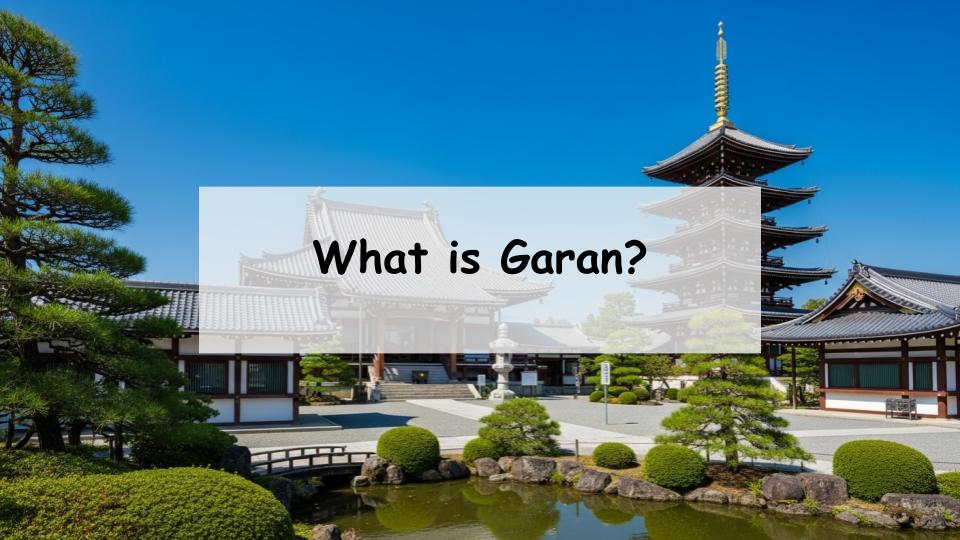“What exactly is a temple’s garan? What do the main hall and pagoda symbolize?” Many people researching Japanese temples may wonder about these questions. In short, garan refers to the group of buildings that make up a temple, each with deep historical and religious significance.
This article first explains the basic meaning of garan, then explores the historical background of Japanese temple architecture. It also examines various types of garan layouts and the roles of key structures such as the main hall, pagodas, and corridors. This is your first step to appreciating the philosophy and beauty embedded in temple architecture.
- What Is a Temple’s Garan? Meaning and Origin
- The History of Garan Layouts in Japanese Temples
- Key Components of a Temple’s Garan and Their Roles
- Famous Temples and Their Garan Examples
- The Meaning of Temples and Garan in Modern Times
- Conclusion: Understanding the Essence of Temples Through Their Garan
- A Message from the Guide
What Is a Temple’s Garan? Meaning and Origin
The Origin of the Word “Garan” and Its Place in Buddhism
The word garan derives from the Sanskrit term saṅghārāma, meaning a garden or place where monks gather for practice. As Buddhism spread from India through China to Japan, this term was adopted into Japanese with the characters 伽藍. It doesn’t simply denote buildings, but the entire sacred space where monks live, study, and practice Buddhism.
In Buddhism, the garan represents the spiritual and communal center of the temple complex, embodying the Buddhist worldview through its architectural arrangement and symbolic structures.
The Relationship Between a Temple and Its Garan
A temple is a place where Buddhist images are enshrined and monks conduct rituals and training. The garan is the architectural complex that facilitates these functions. It is a physical expression of Buddhist teachings and spirituality, typically centered on the main hall and including pagodas, lecture halls, gates, and corridors. Together, these elements support both worship and learning.
The History of Garan Layouts in Japanese Temples
Characteristics of Ancient Temple Layouts (Asuka to Nara Periods)
When Buddhism first arrived in Japan during the Asuka period, temple layouts were heavily influenced by Korean and Chinese models. Temples like Horyu-ji featured symmetrical arrangements with pagodas and main halls positioned side by side. This order reflected the political and religious priorities of early Japan, where Buddhism was promoted by the central government as a foundation for state power.
Changes from the Heian Period Onward
From the Heian period, Buddhism blended with aristocratic culture, and esoteric sects like Tendai and Shingon rose to prominence. Temple layouts shifted to emphasize harmony with natural surroundings rather than strict symmetry. Mountaintop complexes such as Enryaku-ji and Kongobu-ji reflect this new approach, blending architecture with the landscape.
Differences in Garan Composition Across Periods
The Kamakura period saw the introduction of Zen Buddhism and Chinese-style temple layouts featuring simpler, more functional arrangements. During the Muromachi period, the aesthetic ideals of wabi-sabi—austerity and imperfection—became influential in temple design. By the Edo period, temples became more diverse, sometimes elaborately decorated, reflecting the evolving religious and social context.
Key Components of a Temple’s Garan and Their Roles
The Main Hall (Kondō): Enshrining the Principal Image
The main hall is the spiritual core of a temple, housing the principal Buddha or deity. It is where worshippers spend most of their time during ceremonies and rituals. In ancient temples, this building is often called the kondō or “golden hall.”
Five-Story and Three-Story Pagodas: Relics and Buddhist Symbols
Pagodas are towers that enshrine sacred relics (buddhist śarīra) and serve as symbolic representations of Buddhist cosmology. Their tapering shape points toward the heavens, visually expressing the Buddhist universe. Five-story and three-story pagodas are among the most iconic features of Japanese temples.
Lecture Halls, Monk Quarters, and Gates: Training, Learning, and Boundaries
Lecture halls provide space for monks to study scriptures and receive teachings. Monk quarters are living spaces supporting monastic life. The main gate (sanmon) marks the boundary between the secular world and the sacred temple precincts, symbolizing spiritual transition and purification.
Corridors and Inner Gates: Spatial Organization and Pilgrim Flow
Corridors connect buildings and create a sense of rhythm and order within the garan. Walking through these covered pathways helps focus the mind and guides visitors along a spiritual journey. Inner gates separate different temple areas, preparing worshippers mentally as they move deeper into the sacred space.
Famous Temples and Their Garan Examples
The Garan Layout of Horyu-ji
Horyu-ji, one of the world’s oldest wooden structures, preserves Asuka period architectural style. Its garan arrangement—with the kondō and five-story pagoda placed asymmetrically—is a unique example that influenced many later temples. The lecture hall, gates, and corridors all illustrate early temple planning principles.
The Garan Structure of Todai-ji
Todai-ji in Nara, famous for its Great Buddha Hall, features an expansive garan symbolizing Buddhist authority and national protection. The large-scale, linear arrangement of gates, halls, and corridors reflects the religious and political significance of this temple during the Nara period.
Architectural Highlights of Kinkaku-ji and Ginkaku-ji
Kinkaku-ji (Golden Pavilion) and Ginkaku-ji (Silver Pavilion) in Kyoto are less about traditional garan layouts and more about the harmony of buildings with their natural surroundings. Kinkaku-ji emphasizes opulence and power, while Ginkaku-ji reflects simplicity and tranquility. Both exemplify the fusion of temple architecture with Japanese aesthetics.
The Meaning of Temples and Garan in Modern Times
Cultural Heritage and Tourist Attractions
Many temples are designated cultural properties, preserved as invaluable historical treasures. Their garan complexes attract millions of visitors worldwide, offering a glimpse into Japan’s spiritual and architectural heritage.
The Role of Temples and Garan for Contemporary People
Today, temples serve not only as places of worship but also as centers for mental peace and self-reflection. The serene environment of garan, combined with cultural activities like meditation and lectures, meets the spiritual needs of modern society.
Spiritual and Cultural Lessons from Temple Architecture
Temple architecture is a living reflection of Japanese spirituality and culture. The natural materials, harmonious design, and spatial philosophy offer timeless lessons that continue to inspire both Buddhists and non-Buddhists alike.
Conclusion: Understanding the Essence of Temples Through Their Garan
Reading Buddhist Architectural Thought Through the Garan
The garan embodies Buddhist teachings in architectural form, integrating faith, practice, and education. Knowing how these buildings are arranged and what they symbolize reveals the profound philosophy behind Buddhist architecture.
Deepening Appreciation Through History and Roles
Learning the history and functions of temples and their garan enriches one’s appreciation beyond mere sightseeing. It allows us to connect with the cultural, spiritual, and historical layers embedded in these sacred spaces and deepens our understanding of Japan’s heritage.
A Message from the Guide

Being aware of the garan greatly enhances the enjoyment of visiting temples.










Comment